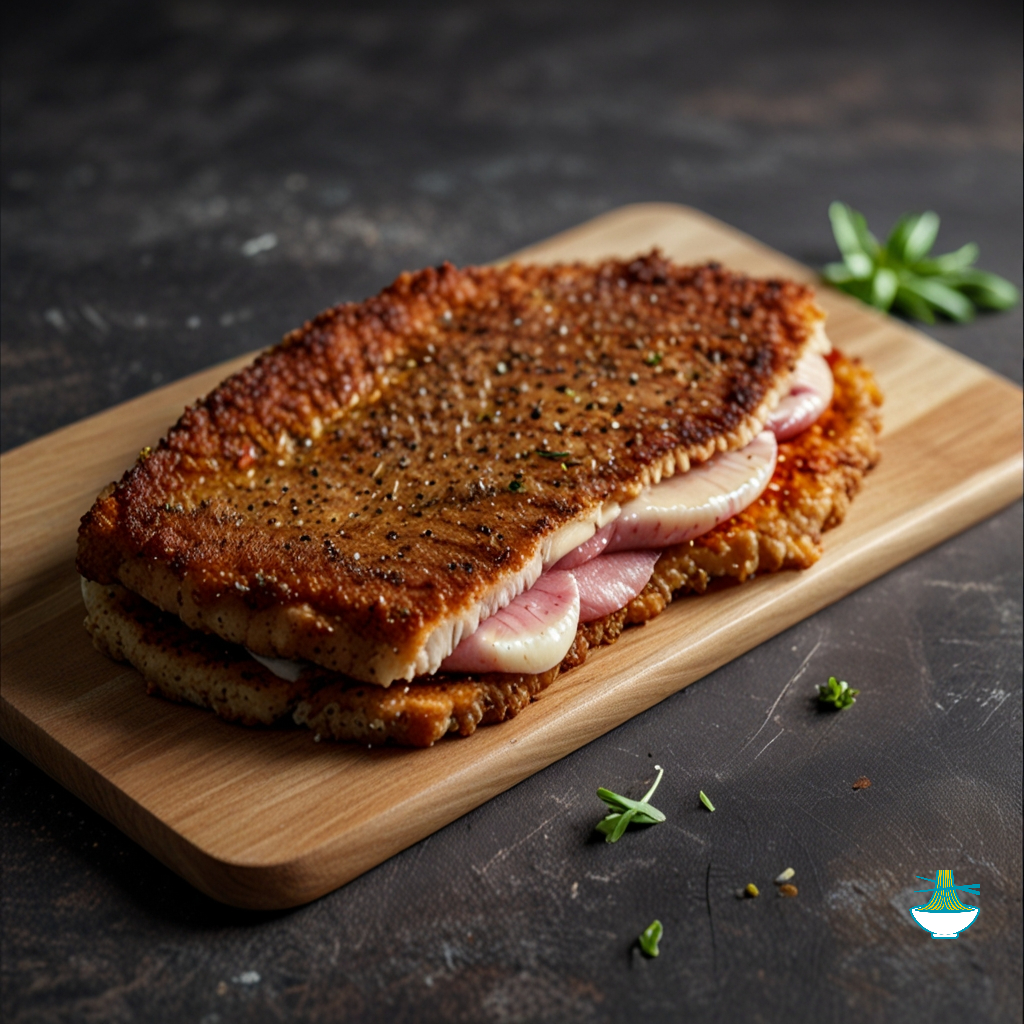The milanesa, a dish originating from Italy but beloved in many parts of the world, involves thinly sliced meat (typically beef or chicken) coated in breadcrumbs and fried until crispy. It's often served alongside mashed potatoes or in sandwiches. The dish has roots in Milan, Italy, where it's known as "Cotoletta alla Milanese." Its popularity spread globally, particularly in Latin America, where it became a staple of Argentine and Uruguayan cuisine. Today, variations of the milanesa can be found in many countries, each with its own unique twist on the classic recipe.
Ingredients:
- Thinly sliced beef or chicken
- Breadcrumbs
- Eggs
- Salt and pepper
- Vegetable oil (for frying)
Method:
1. Season the thinly sliced beef or chicken with salt and pepper.
2. Beat the eggs in a shallow dish.
3. Place breadcrumbs in another shallow dish.
4. Dip each slice of meat into the beaten eggs, coating both sides.
5. Then, coat the meat in breadcrumbs, ensuring it's evenly covered.
6. Heat vegetable oil in a frying pan over medium heat.
7. Fry the breaded meat slices until golden brown and crispy on both sides.
8. Once cooked, remove the milanesa from the oil and place them on paper towels to drain excess oil.
9. Serve hot, either alongside mashed potatoes or in a sandwich.
This straightforward recipe yields delicious, crispy milanesa every time, perfect for a quick and satisfying meal.
Nutrition Value:
1. Thinly Sliced Beef or Chicken:
- Calories: Approximately 120 calories per 3-ounce serving of beef, or 165 calories per 3-ounce serving of chicken.
- Carbohydrates: Negligible (less than 1 gram per serving).
- Protein: Beef provides around 22 grams per serving, while chicken offers about 26 grams per serving.
- Fat: Beef contains about 4.5 grams of fat per serving, whereas chicken has roughly 6 grams of fat per serving.
- Sodium: Beef typically contains around 50 milligrams of sodium per serving, while chicken may have about 75 milligrams per serving.
- Cholesterol: Beef can have approximately 60 milligrams of cholesterol per serving, while chicken may contain around 70 milligrams per serving.
- Nutritional Benefit: Both beef and chicken are excellent sources of high-quality protein, essential for muscle growth and repair. They also provide essential nutrients such as iron, zinc, and B vitamins, which are important for overall health.
2. Breadcrumbs:
- Calories: Around 110 calories per ¼ cup.
- Carbohydrates: Approximately 20 grams per ¼ cup.
- Protein: Roughly 3 grams per ¼ cup.
- Fat: About 1 gram per ¼ cup.
- Sodium: Breadcrumbs may contain around 200 milligrams of sodium per ¼ cup.
- Cholesterol: Typically, breadcrumbs are cholesterol-free.
- Nutritional Benefit: Breadcrumbs provide carbohydrates for energy and a small amount of protein. They also add texture and help bind ingredients together in recipes like breaded meats.
3. Eggs:
- Calories: Approximately 70 calories per large egg.
- Carbohydrates: Less than 1 gram per egg.
- Protein: About 6 grams per egg.
- Fat: Around 5 grams per egg.
- Sodium: Eggs contain around 70 milligrams of sodium per egg.
- Cholesterol: Approximately 185 milligrams per egg.
- Nutritional Benefit: Eggs are rich in high-quality protein and contain essential vitamins and minerals such as vitamin D, vitamin B12, and choline. They are also a good source of healthy fats.
4. Salt and Pepper:
- Salt: Negligible calories, carbohydrates, protein, and fat. However, it contributes sodium to the dish.
- Pepper: Similarly, negligible in calories, carbohydrates, protein, and fat.
- Nutritional Benefit: Salt enhances flavor, while pepper adds a mild spicy kick. Both are used primarily for seasoning rather than nutritional value.
5. Vegetable Oil (for frying):
- Calories: Around 120 calories per tablespoon.
- Carbohydrates: Negligible.
- Protein: Negligible.
- Fat: Approximately 14 grams per tablespoon.
- Sodium: Negligible.
- Cholesterol: Negligible.
- Nutritional Benefit: Vegetable oil provides fat, which is essential for absorbing fat-soluble vitamins and providing energy. However, it should be consumed in moderation due to its high calorie content.


Comments